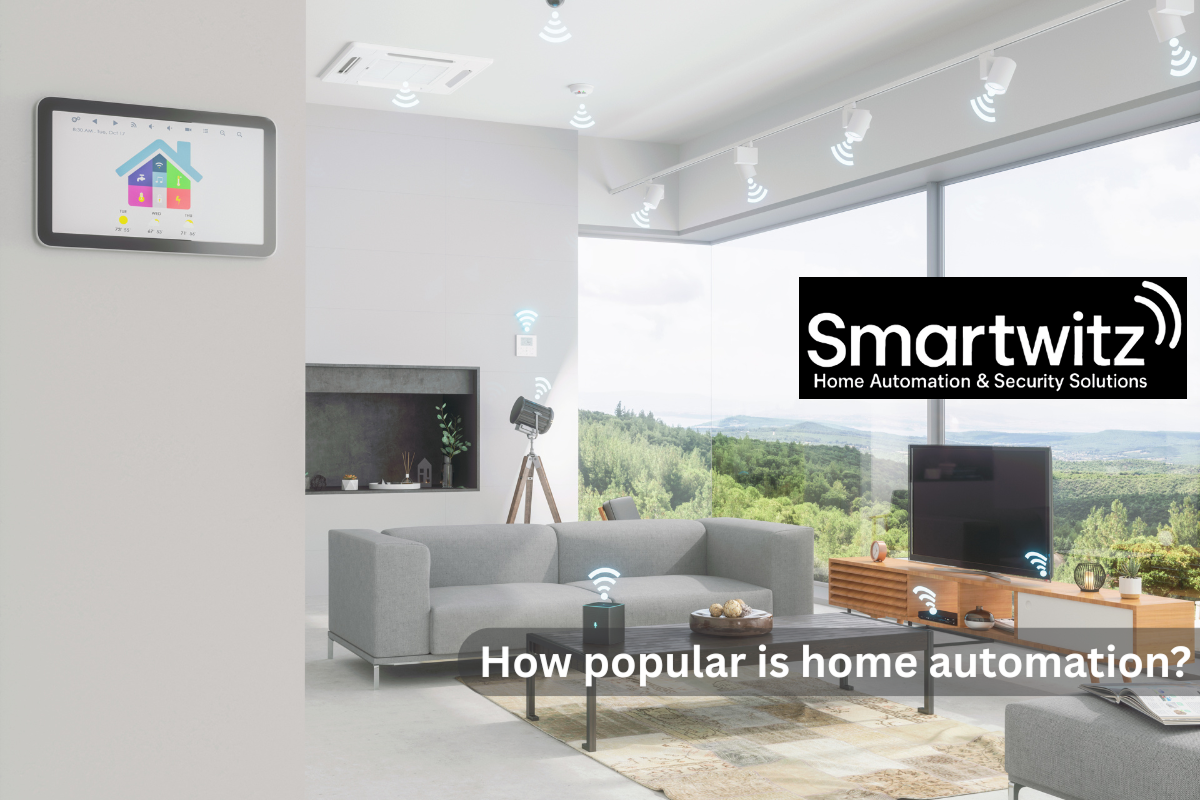How popular is home automation?

Home Automation’s Ascent: A Revolution in Technology
Home automation has evolved from a futuristic idea to a necessary component of contemporary life in recent years. What was formerly thought to be exclusive to affluent families and computer enthusiasts is now found in homes throughout the world. Home automation has become the norm rather than the exception because of the quick development of Internet of Things (IoT) technology and the rising need for energy efficiency, convenience, and security.
The Home Automation Market’s Global Growth
The market for home automation Service in Navi Mumbai is expanding at a rate never seen before. The market is expected to develop at a compound annual growth rate (CAGR) of 11% between 2024 and 2030, from its 2023 valuation of over USD 64 billion, according to current studies. This growth is being driven by elements like rising disposable incomes, increased awareness of energy conservation, and the growing significance of smart security systems.
The highest market share is held by North America, closely followed by Europe and Asia-Pacific. Adoption is booming in developing nations, especially China and India, where the middle class is expanding, and smartphone usage is rising.

The main factors influencing the popularity of home automation for increased safety and security
Modern homeowners place a high value on security systems with remotely controlled motion detectors, smart locks, and surveillance cameras. These technologies improve consumers’ safety and peace of mind by providing real-time alerts and access.
Sustainability and Energy Efficiency
Energy management systems, automatic lighting automation, and smart thermostats all contribute to energy efficiency. By effectively controlling their energy use through automation, homeowners can save money on utility bills and drastically lower their carbon footprint.
Comfort and Convenience
An unparalleled degree of ease is added when voice commands or smartphone apps are used to control the lighting, climate, entertainment systems, and appliances. Features including smart kitchen equipment, motorized blinds, and customized lighting settings, produce a seamless living environment.
Voice Assistant Integration
The use of home automation has increased due to the popularity of voice-activated gadgets like Apple’s Siri, Google Assistant, and Amazon Alexa. Simple voice commands can be used to control many smart devices, which improves the naturalness and intuitiveness of technology interaction.
The Most Popular Home Automation Technologies
Intelligent Lighting Systems
Users can alter the brightness, colour, and scheduling of smart lighting. Dynamic lighting experiences can be customized for activities, emotions, or even media content with solutions like Philips Hue and LIFX.
Climate Control uUsingIntelligence
Smart thermostats like Nest and Ecobee save a lot of energy by optimizing heating and cooling schedules and learning user preferences over time.
Automation of Home Security
In order to provide real-time security management from any location, advanced smart home security system incorporate sensors, smart locks, video doorbells, and surveillance cameras. All of these components may be controlled via a smartphone app.
Automated Entertainment Systems
Immersion entertainment experiences catered to personal tastes are produced by home theatres, multi-room audio systems, and smart TVs that unified systems can manage.
Intelligent Kitchen Appliances
With an emphasis on efficiency and convenience, smart kitchens—which range from remotely operated ovens to refrigerators that can track groceries—represent a developing market within home automation.
Demographic Trends in Millennials’ Adoption of Home Automation Taking the Lead
Millennials are the group most likely to use home automation systems because they are quite tech-savvy. Their inclination for personalization, mobile control, and environmental awareness is a wonderful fit for smart home features.
Baby Boomers and Place-Based Aging
Fascinatingly, home automation is also being embraced by Baby Boomers, especially because it may help them age in place. Automated illumination, fall detection sensors, and smart medical alerts increase senior users’ safety and freedom.
Obstacles to the Growth of Home Automation
Home automation has drawbacks despite its widespread use. Worries about data privacy, device compatibility, and the upfront expense of smart home setups may put some customers off. However, these issues are being aggressively addressed by industry developments that centre on improved cybersecurity and interoperability standards.
Transform your entertainment experience with smart home cinema solutions by Smartwitz, blending cutting-edge technology, stunning visuals, and seamless automation perfectly.
Home Automation’s Prospects
AI and machine learning will be more integrated into home automation in the future, allowing systems to predict consumer demands and behaviour. Smart home solutions will be further revolutionized by technologies like 5G, edge computing, and blockchain, which will increase their efficiency, security, and responsiveness.
Furthermore, sustainability will remain a top priority, with smart houses being essential for cutting energy use and assisting with international environmental projects.
In conclusion, home automation will continue to exist.
To sum up, home automation has changed from being a luxury to being essential to contemporary life. It is not surprising that its popularity is rising all over the world, given its capacity to increase security, boost energy efficiency, and provide unmatched convenience. We may anticipate that smart homes will become even more user-friendly, integrated, and essential as technology develops.